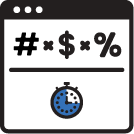One of the earliest rules I learned in sales was, “don’t knock the competition.” The rule that states that sellers shouldn’t criticize their competition in front of their customers.
Despite this being one of the oldest rules in sales, I still see and hear stories of sellers criticizing their competition to their customers.
This article is here to impact positive change in our industry and influence ‘clean’ selling. You will win more by selling clean, and MEDDIC can help.
There are several reasons why it is not a good idea to criticize your competition:
1. It is unprofessional
It can be seen as dishonorable to criticize your competition, which is likely to lower your standing with your customer.
2. You are also criticizing your customer
In a competitive deal where your customer is considering your solution versus your competitors by criticizing your competition, you are questioning their judgment. Imagine you were considering buying either a BMW or a Mercedes, and you liked both. If the BMW salesperson started saying how bad the Mercedes was, you could take the criticism personally as it undermines your judgment.
3. It makes you look weak
If you start talking negatively about your competition without being directly invited to do so, you will appear as if you have insecurities about your solution versus your competitors.
4. It focuses on the negative
Your customer isn’t going to feel good about a negative discussion about your competition.
5. Your competition is unlikely to be caught out by your criticism
If you say something negative about your competition that raises a concern with your customer, they are likely to raise it with your competition, giving them a chance to respond and overcome the issue. If your competition is sharp, they’ll rebuff the issue in a manner that shows you up for playing ‘dirty’.
I once had a competitor we suspected had paid for some negative PR to be written about our company. The article was about a security flaw that was fixed immediately, but the competition was still using the article over two years later. I genuinely believe that our competitions use of the article helped us rather than hindered us as it allowed us to do two things:
-
Take the high road – I instated a policy with my sales team that if we ever felt under attack by our competition, we would not respond in kind. Instead, we would say:
“the issue you have just raised is something we regularly hear our competition is saying about us… We are not going to get into a tit for tat debate about our competition. We would rather focus on our suitability for your needs”.
This response elevated our position with our customers as being honorable, and as the biblical fable says:
“A lion doesn’t concern himself with the opinion of a sheep...”
-
Excuse to reference sell – In the above example where our competition was sharing the security flaw article we would break our response down into three parts:
-
Explaining what the issue was and how we dealt with it
-
Why it was irrelevant now
-
Why other brands had chosen us despite having had the same article sent to them. This tactic is particularly effective if you can reference organizations with high-security standards such as banks or government customers.
-
The last time a customer raised the security flaw article in a meeting, I flipped the conversation to praise our competition. I said:
“I am not going to get into a tit for tat discussion about us and competition name. They have quite a good solution, and sometimes organizations will pick them, and sometimes they will pick us.
One thing we have become very good at is picking the companies that are likely to choose us and specializing in trying to win them as customers.
That is why I am here to support sellers_name, and you have the full support of my team on this project. The reason we feel so confident we are the right solution for you is…”
I then listed the unique differentiators that we had identified, quantified, and worked on getting added to the Decision Criteria.
As we left the customers office, one of the execs from the meeting followed us to the elevators and said:
”Hey, I just wanted to say that I really liked what you said when the thing about the competition came up, that was really refreshing.”
We won that deal, and to my best knowledge, my team has never lost a deal to that competitor, where our competition has used the article.
Stay Professional. Use MEDDIC
The intention sellers have when knocking their competition is to try and highlight weaknesses. Fortunately for those of us that sell with honor, direct criticism doesn’t resonate with customers.
However, it doesn’t mean that you should skip making your customer aware of the weaknesses of your competition. It just means that you need to take a more professional approach. This is where MEDDIC comes in.
By being thorough in your discovery, you are likely to uncover unique differentiators of your solution. By implicating the pain that your solution solves and attaching the value of solving it to a Metric, you will be in a strong position to have the differentiator added to your customer’s Decision Criteria.
What you are doing is turning your differentiators into requirements. The objective is to obtain consensus with your customer that your differentiator is a requirement they need.
In the Qualification chapter, I described the engagement with the Global Media Company, who was looking to buy an enterprise social media platform.
The unique differentiator we identified was the rules engine, which turned out to be the deal’s winning factor. The trick was to identify the differentiator, quantify the pain it would solve, and then get it inserted into the Decision Criteria as required functionality.
In MEDDIC terms, we used Discovery to Implicate the Pain, which we then quantified with Metrics and then added to the Decision Criteria by reaching a consensus with the customer that they needed the functionality.
Once you have your differentiator locked into the M, I, and DC of MEDDICC, you can move to put it to work against your competition. The best tactic for doing this comes by way of Planting Pain. You can set your competition up to reveal pain they cause to your customer simply by cleverly planting some pain.
Let’s dive a little further into what Planting Pain is.
Planting Pain
Planting Pain is a process Elite Sellers undertake to surface pain with their customer when they aren’t there. The process is most effective when used to highlight or uncover a point of differentiation around your solution, that by proxy, goes on to highlight a shortfall or your competition.
The trick is to zoom into the pain you have Implicated upon your customer and consider how your solution solves that pain. Where your solution has unique differentiation from your competitors is the area you should focus on Planting Pain. Do this by considering what happens if the customer doesn’t have your solution, what pain would occur? Once you know the answer to this question then consider what questions you can ask your customer to implicate them in this pain too.
For example: If a sales leader is looking to implement a sales qualification framework and is considering MEDDICC versus BANT, and I want them to buy this book, I would not criticize BANT. Instead, I would Plant some Pain by asking questions aimed at highlighting my strengths and BANT’s weaknesses. The questions may sound like this:
Me: “What are you doing to ensure you are qualifying your deals throughout their lifecycle?”
Sales Leader: “We are not qualifying our deals very well at the moment, least of all throughout the lifecycle..”
Me: “Ok, but if you do invest in implementing a qualification framework, will you want it to help you qualify throughout the entirety of your deal lifecycle?”
Sales Leader: “Yes, definitely!”
Me: “Do you mind if I add this as part of your Decision Criteria?”
Sales Leader: “Please do.”
In this three-question exchange, I have not only uncovered a Pain, but I have also turned the Pain into a requirement that sits within the Decision Criteria. Of course, the work here isn’t complete. As detailed in the Decision Criteria chapter, there is a skill in adding your own requirements to the Decision Criteria, but this is a solid way to start.
It is important to remember that the questions you ask to Plant Pain are not intended to catch your customer out; they are intended to lure your competition into a scenario where their answers cause your customer pain when considering their solution. It is called Planting Pain because you are planting some pain for your competitors to surface on your behalf elevating your value and decreasing theirs.
Continuing on the above example of where a Sales Leader is looking for a sales qualification framework, let’s imagine a likely conversation that the BANT Seller is now going to have:
Sales Leader: “How does BANT help me to qualify throughout the sales process?”
BANT Seller: “BANT helps you to qualify at the earliest opportunity, once you know the customer has Budget, Authority, a Need and their Timing you are qualified!”
Sales Leader: “Hmm, ok.”
If you are a Seller representing MEDDICC in the above example, you have laid the foundations perfectly for yourself to double down on the differentiator you have identified for yourself. Even if BANT is a superior qualification framework for early qualification, it is unlikely it would prevail over MEDDICC; such is the power of the pain we have planted.
(BANT isn’t a superior early qualification framework, just sayin’.)
Planting Pain Guidelines
As a Seller, I initially found it tricky to get my head around Planting Pain. I felt a little like I was acting in a play for which my fellow actor didn’t have the same script as me. I’d ask questions and not get the answers I needed.
Pain Planting is an elite-level strategy. Just like any skill level-related pursuit, it takes practice and perseverance. Thinking you’ll come out of the blocks setting Planting Pain perfectly would be the same as a person expecting to apply topspin on their backhand perfectly on their first try in a game of tennis.
This section looks at some guidelines to improve your Planting Pain:
Persevere and Practice
Planting Pain may not click at first, but keep at it. Practice will make perfect.
Don’t (only) practice on your customers.
This is where we can break the rule of ‘do not practice on your customers’ a bit because you need real-world experience with Planting Pain, and there is not too much that can go wrong if you are not very good at it. So, get out there and try it out.
However, you should also practice with your peers. It is likely that as a sales team, you will be able to construct some themes for your Planting Pain tactics for each competitor. So, I’d advise getting together to brainstorm some likely ways you can plant pain for your most commonly found Competitors.
Keep it Open
Like any good discovery question, you need to keep the questions open-ended. Consider the above example with the Sales Leader considering MEDDICC and BANT if the opening question was:
”Are you qualifying your deals throughout their lifecycle?”
The answer would have been “No” and it would have been much harder to get where I wanted to go from there, not to mention it would have felt more like an interrogation than a conversation with the customer.
Keep it Two-Sided
We want to Plant Pain to set up our competition to uncover the plants and make our customers consider the repercussions of the shortfall we are highlighting.
Again, using the MEDDIC vs BANT example, not only will the Seller benefit from finding out about the lack of deal qualification within their deal cycles, but the customer will also be forced to consider the issue; and at that moment, will feel the pain implicated upon them.
Take Action
If you have asked a good Planting Pain question that has hit the mark but not followed through with your customer by asking them to add it to their Decision Criteria, then proverbially speaking, you will have dug a hole and planted the perfect pain within it, only to never direct your customer anywhere near it.
Summary of Planting Pain
When done effectively, Planting Pain should open your customer’s minds to the possibilities with your solution for aspects of value that they hadn’t perhaps considered yet.
Planting Pain has a by-product similar to Win/Win Discovery, where they make your customer feel Implicated by the intensity of the pain and, therefore, may have the effect of increasing the urgency surrounding your deal. Best of all, they do this while simultaneously highlighting a shortfall of your competition’s solution without you needing to lower your integrity to criticize your competitor directly.
Win/Win/Win.





.png)





.png)
























%201.png)








.png)

-1.png)
-1.png)
